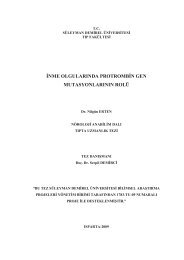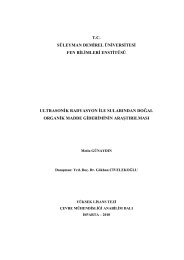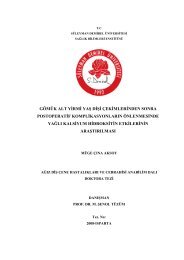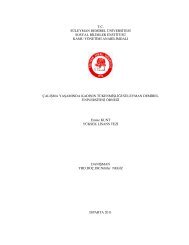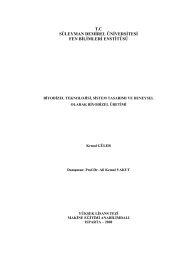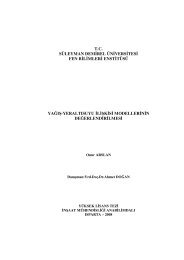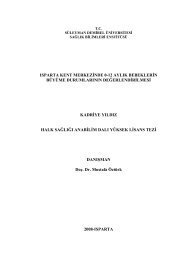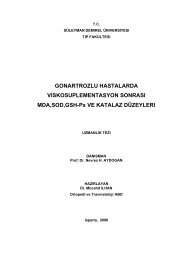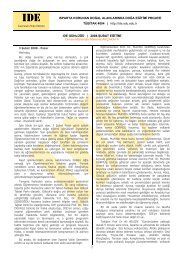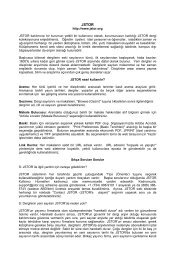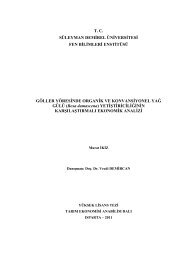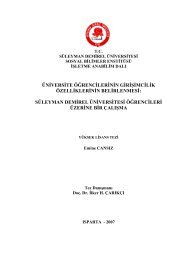pediatrik yaÅ grubu çeÅitli anemik hastalıkların ayırıcı tanısında ...
pediatrik yaÅ grubu çeÅitli anemik hastalıkların ayırıcı tanısında ...
pediatrik yaÅ grubu çeÅitli anemik hastalıkların ayırıcı tanısında ...
Create successful ePaper yourself
Turn your PDF publications into a flip-book with our unique Google optimized e-Paper software.
7. SUMMARY<br />
Diagnostic Significance Of Serum Soluble Transferrin Receptor In Various<br />
Pediatric Anemic Diseases And Relationship Other Haematologic And<br />
Biochemistrycal Parameters<br />
Iron deficiency anemia (IDA), which is the most common cause of anemia<br />
im childhood, also is the most common disease in the world. Having been shown that<br />
iron deficiency occuring in infancy has serious negative effects on development of<br />
neural and motor system, the importance of early diagnosis and treatment of IDA has<br />
become more clear. In spite of its wide occurance, IDA can be difficult to distinguish<br />
from other causes of microcytic hypochromic anemia, notably the anemia of chronic<br />
inflammation, infection, or malignancy. The commonly used laboratory parameters<br />
often do not discriminate between the various causes. Serum soluable transferrin<br />
receptor (sTfR) is a marker which is used to analyse erythropoiesis without an<br />
invazive procedure. sTfR is a reliable parameter in evaluation of functional iron<br />
capacity and erythropoietic activity in adults but there has been few studies to show<br />
the importance of sTfR in anemia. In this study, the importance of sTfR in addition<br />
to hematological and biochemical parameters, and also the reliability of clinically<br />
used parameters were assessed to evaluate erythropoietic activity and existence of<br />
iron deficiency in children with various causes of anemia, such as iron deficiency<br />
anemia, chronic renal failure, anemia of chronic infection, aplastic anemia,<br />
thalassaemia major, acute leukemia, without bone marrow evaluation.<br />
sTfR, unlike ferritin, is not an acute phase reactant.It is used to distinguish<br />
between iron deficiency anemia and anemia due to chronic inflammation, to<br />
diagnose subclinical iron deficiency in pre-anemic stage, and also is used to find out<br />
iron deficiency in chronically active diseases. sTfR value is raised in conditions such<br />
as hemolytic anemia which has high degree of erythropoietic activity, thalassaemias<br />
with ineffective erythropoiesis and in megaloblastic diseases. As opposite, it is<br />
lowered in chronic renal failure, intense cancer treatment, aplastic anemia,<br />
hypertransfusion which cause bone marrow hypoplasia. In addition to stfR value,<br />
evaluating MCV, ferritin and Epo levels add a significant value for diagnosis.<br />
100



